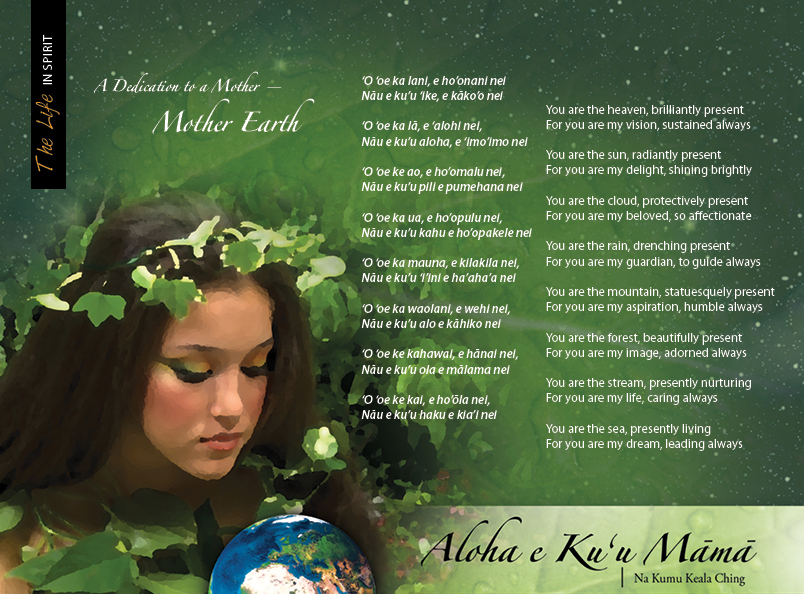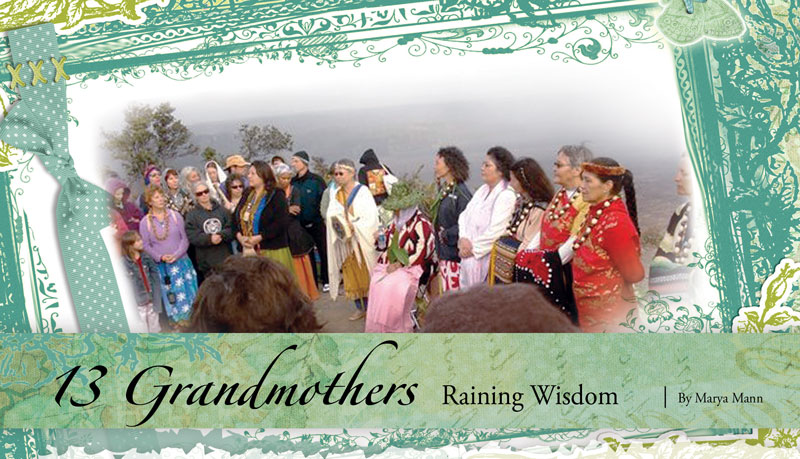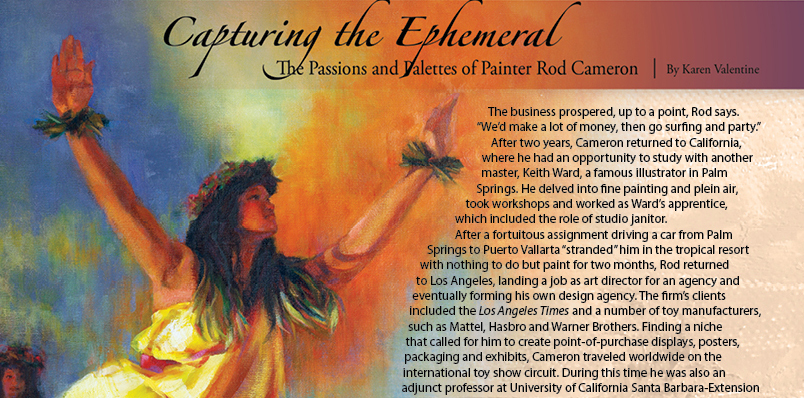
Healing Grass: the Amazing and Versatile Vetiver

By Jessica Kirkwood
Just past the 7-mile marker, above Mamalahoa Highway along the Hamakua Coast, sits the quaint little town of Papaikou. The directions read: hang a left up mauka about a mile; there will be some cows on your left. Then hang a left as the road turns to gravel and cinder. “You can’t miss us.” And so the story goes.
I approached the elevated property to discover endless rows of thickly bladed grass, swaying with the breeze. A youthful man of 28, sunglasses shielding his eyes, with a silhouette strong and self-assured, came out from a patch of neatly maintained greenery.
“Glad you could make it,” he greeted, holding a handful of verdant foliage to feed to his own personal living lawnmowers, a herd of sheep grazing the land. As he approached, I noticed seven feather tattoos lightly drifting down his arms. I could immediately sense his humble persona.
Jason Fox quite literally surrounds himself with his greatest passion: vetiver grass—a tenacious, clumping perennial grass that has protective, healing and artistic properties.
Like many specialized farmers, he began his current activities not yet the keen and innovative activist he would eventually become. Formerly from Philadelphia, Fox was on a journey of self-discovery when, in 2004, he became casually interested in wind and solar energy while growing tomatoes and cucumbers for a local farmer. Seeking to travel, he sold all of his belongings and applied for a passport. “I was looking for something else to do. One circumstance led to another, and I found myself here on the Big Island,” began Fox.
Vetiver was introduced to Fox while working on a farm in Papa`aloa.
“This farmer, Solomon, introduced me to some people who were pioneering visions to benefit the islands. I connected with a kid who had access to vetiver slips, and my visions began propagating outward from there,” he said.
Guiding me into his property, Fox invited me into the charming and rustic common house that he had hand-built. It was no more than 100 square feet, yet felt perfectly spacious. The structure’s ladder, fences and many tools used around the property were created from waiawi wood, a type of guava that surrounds his land.
As I scanned his property—weather sunny, winds light, sky and ocean expansive—he sat down and shared the more-detailed account of how he arrived at his current locale and vocation.
“Just before I left for Hawai`i, my dad told me he had an old college buddy who moved to the Big Island years ago. He briefly mentioned his name, Jim Dahlberg, and told me if I ever bumped into him, to say hi,” said Fox.
As fate would have it, this whimsical request became a reality as, coincidentally, Fox ended up working with Dahlberg’s son, Peter. A series of synchronicities led him to then meet Jim Dahlberg and share with him his dream of growing vetiver. Dahlberg contacted a friend who was able to help him find a piece of land to lease.
Today Fox is one of only a handful of certified vetiver technicians in the United States and operates his own organic, commercial farm on a 22-acre plot of land. He realizes that this land and its bountiful resources are central to our survival and believes this grass is essential to our sustenance.
Hawai`i is famed for its lush, tropical vegetation and rich valleys. But the same rainfall that nourishes the land can create severe flooding and run-off with potentially devastating effects on the island’s eco-system. Remarkably, vetiver is tolerant to toxic minerals. It filters antibiotics and removes heavy metals from soil and water.
“It is actually for this reason that I fell in love with the grass. When I started studying it, I realized I could help undo the mistakes people made in the past.” One such mistake includes the soil pollutants left over from once-flourishing sugarcane industries.
The success of vetiver as a moderation plant gained significant attention from the works of Don Miller. In 1999 and 2000, Miller took a group of devoted volunteers into the southernmost area of Vanuatu, where they hand-planted vetiver in the troughs of gullies, in an area that had lost its shell fishing and whose reefs had been destroyed. Within 10 years of vetiver’s germination, the shell fishing industries were back and the once-dead reefs were again thriving. Today, these types of success stories are countless across the globe.
“The World Bank began funding vetiver after he [Miller] restored the shellfish ministries and native trees. He pioneered some incredible stuff,” continued Fox.
More than 100 countries use the vetiver system technology today for some globally beneficial measures, including the reduction of landslides and highway, road, railway, dike, canal and infrastructure collapse. Vetiver improves wetland and soil composition, including the renewal of native plants.
On the Hawai‘i Island in particular, where tsunamis pose a great threat and earthquakes of varying magnitude occur daily, rigid structures, including cement devices, do a poor job of absorbing flow and wave energy from these quakes. Often, unnatural devices simply transfer the soft soils to another place, which aggravates the disaster, rather than reducing it.
“Most walls are passive, simply waiting for the slopes to fail. And when the slopes do fail, the walls also fail. We’ve see it time and time again,” said Fox.
Defending Hawai’i, quite literally against a concrete way of thought, Fox contends that as a developed country we rely too heavily on rigid materials to stabilize areas that could be naturally secured using certain plants.
Vetiver has a strength value of approximately one-sixth of that of mild steel, while its roots penetrate 12 feet deep at maturity. Imagine rows of thick, tall grass with an equally dense web of weaving roots inter-connected within the earth.
“This tells you the soil isn’t going anywhere, which is exactly what we need here in Hawai‘i,” Fox continued, “Concrete undoubtedly causes havoc, just counting its use of fossil fuels and shipping alone. I can plant thousands of dollars worth of vetiver for what people are spending millions on. We don’t have to bulldoze land, or build rock walls. There’s a natural solution to everything,” Fox said.
Fox has already planted rows of vetiver on the hillsides of a handful of properties on the Big Island and Kaua`i, with the intent of helping to prevent soil erosion. One house in Papaikou withstood 32 inches of rain in 48 hours last winter, after much of its foundation had washed away several times in years prior. In a past earthquake, another house in Hilo slid off a cliff, and so their neighbors have looked to vetiver as a preventative solution. Fox is very pleased with the results.
“This really isn’t a profit-making business. My goal is to have people using vetiver properly in Hawai‘i, and to understand it, so we can have clean and stable systems,” he affirmed.
One of the main hesitations of introducing external plants to Hawai‘i is that the eco-system is so undeniably fragile. Many people are afraid of invasive species. “It’s definitely a touchy subject here on the Big Island.” But sunshine vetiver, the kind grown by Fox, is not fertile. The seeds are sterile, and so, it’s not invasive. “It’s minus-8 on the invasive scale, which is the lowest possible measure.” What’s more, it doesn’t compete with the plants it is protecting, it can grow in a wide range of climates, is affordable and easy to maintain.
It wasn’t so much Fox’s extensive knowledge of this seemingly unassuming grass that engaged me, but rather his passion for its abilities. “It’s a miracle grass, really. Vetiver has so many uses,” he said.
Originating in India, vetiver is related to lemongrass, citronella and palmarosa, and is one of the very oldest plants on earth.
As tough as the plant is in physical composition, it also has quite a soft, unseen and spiritual aura that has stimulated human beings for millennia. In India, it was placed on funeral pyres as a symbol of reincarnation and ever-lasting life.
In aromatherapy, it was traditionally used to heal someone experiencing shock, as it is said to center, ground, calm and restore. Others burn vetiver to protect, re-balance and harmonize their homes.
The scent, which is most often hydrolyzed into oil, stems from its roots. It is brilliantly earthy and exotic. The first time I was introduced to the aroma, I was instantly hit with an overwhelming dose of nostalgia and intrigue. It’s no wonder the perfume industry of haute couture uses it as a base in a myriad of fragrances such as Channel, Coco, and Miss Dior.
As a tea base it is useful for alleviating cramps, and has antibacterial and antifungal agents. Many artisans craft bags, placemats, and lampshades by weaving the roots. It is also used as a repellent for rodents and insects, including termites.
Vetiver is clearly a treasure to Fox, but to most, the word has never even passed through their vocabulary.
“A level of insight about the plant hasn’t been brought to the public’s attention yet,” he said.
Fox has given a handful of presentations around the island, most recently an informative talk for the board of engineers in Kona on vetiver’s abilities to preserve, maintain and protect the islands. With his holistic approach to understanding not only vetiver’s capabilities, but plants in general, he concludes: “What I’ve come to realize is that it’s hard for people to trust that plants can provide for us what man-made creations can. This is the underlying issue with our society today. It’s even seen in our relationships with food and medicine. We’re so disconnected. I want to be a part of re-introducing that connection.”
It’s like anything really—a bandage approach to building, to food, to health and well-being will eventually worsen the problem.
Touring his property, it’s no doubt that Fox walks the talk. The life he has created for himself is simple, yet deeply profound. His acreage is 100-percent sustainable. He lives without a current of electricity; at nighttime his living quarters are illuminated by candlelight. He uses a solar panel for his pump and a compost toilet to recycle waste back into the earth. At one point I asked where I could pee, and he pointed to a patch of plants outside. “It’s really good for them; urine helps them grow,” he smiled.
We explored further as he taught me how to pull and re-grow kalo, the sacred Hawaiian root-vegetable, and placed a few of them into a cloth bag for me to take home. He sliced off a stalk of fuzzy white sage, pulled out a couple yacon and added them to the gift bag. Additional displays of life rising from his land include a three-year-old avocado tree that had just begun to produce fruit, flowering patches of Okinawa spinach, native `awa plants, Mexican papaya trees, cassava, okra, banana trees, squash and pigeon peas.
As we walked back to the cabin he calls home, I notice a mountain-fed stream soothing to the ear flowing just below, and from his window, the tip of a waterfall is seen off in the distance. Branching above, an ancient mango tree protects his sanctuary.
I left to return to Hilo revitalized, gaining a new sense of appreciation for sustainable, efficient and conscious living, and of course, the value of vetiver. This plant is perhaps a metaphor for life; we become deeply rooted in our essence by trusting in our natural environment, bending graciously with the winds of change and, in doing so, find our own natural state of being.
Resources:
Jason’s website


